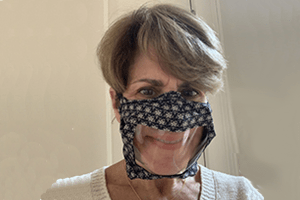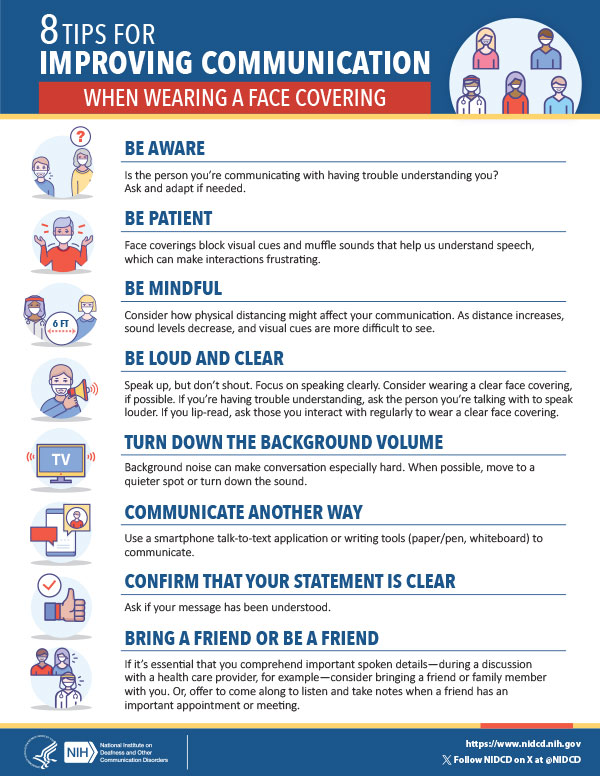
July 10, 2020
Communication is an important and complex transaction that depends on visual and, often, auditory (hearing) cues. Factors that influence how well our spoken language is received include our eye contact and body language, whether we stand or sit while speaking, the tone of our voices and our facial expressions, and environmental lighting and background noise.
Individuals with hearing problems (and even those with normal hearing) may also pay close attention to a speaker’s mouth—known as lip-reading or speech-reading—to follow conversational speech. In the U.S., approximately 15 percent of adults over age 18 report trouble hearing. Hearing loss develops for many reasons, including exposure over time to loud noise. Some people are born with hearing problems, and many develop hearing loss as they grow older. Regardless of the cause, hearing loss is disabling for millions of people, including half of people in the U.S. ages 75 and older.
For most of this spring and now into the summer, cloth face coverings (face masks) and physical distancing have become the new norm in many places. Public health guidelines recommending these safeguards against the COVID-19 pandemic aren’t likely to change anytime soon. These necessary precautions can be exhausting—especially for individuals with hearing loss who may depend on lip-reading to communicate.
Cloth face coverings obscure facial features, disrupting speech perception and the emotion conveyed by the speaker. They also filter speech, making sounds less clear. When it is harder to understand speech—whether because of cloth face coverings, distance, or other factors—research suggests that we have fewer cognitive resources to process information deeply. As a result, communication suffers, and feelings of stress and isolation may increase.
Speech, language, and hearing capabilities are highly individualized. These difficult times offer all of us the opportunity to be mindful about communication. It will require extra effort. I encourage everyone to meet these challenges with patience, kindness, and a commitment to problem-solving. Speak more clearly and perhaps louder than you normally would (without shouting). If a clear face covering is available, consider using it in place of the cloth face covering you currently use, so that your mouth is visible. See Guidance for Wearing Masks, from the Centers for Disease Control and Prevention (CDC), for information on clear masks, cloth masks with a clear panel, and transparent medical masks.
Ask the person you’re speaking with if they understand what you’re saying. Another option is to ask them to repeat back what you’ve said. You can also offer to use another method (smartphone, paper and pen, whiteboard) to get your message across. And, when possible, avoid loud background noise when interacting. This can both improve comprehension in the moment and protect your hearing for the future.

[Download PDF version | Text version]
* Note: PDF files require a viewer such as the free Adobe Reader.


